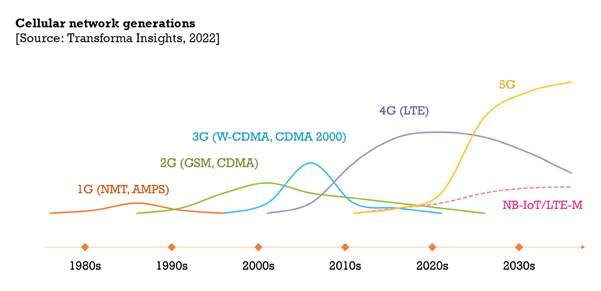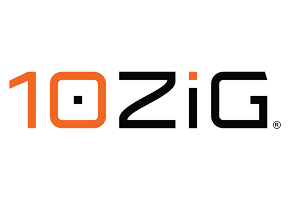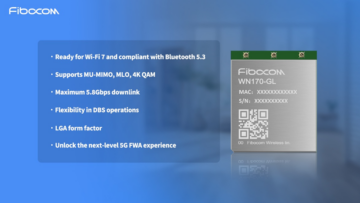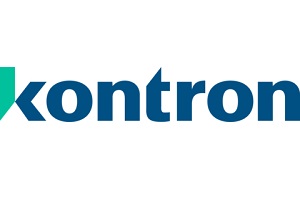In December 2022, Transforma Insights released a White Paper ‘2G and 3G switch-off: what network evolution means for IoT’ in collaboration with Telia and Ericsson, which looks at the implications of 2G and 3G network switch-off for enterprise IoT deployments. The refarming of spectrum is nothing new, with countries such as Australia, Japan and the US having engaged in various such project for a decade or more. However, the pace of such activities is now accelerating, particularly in Europe. The upshot is that more and more enterprises are faced with significant decisions about how to cope with the impending network switch-offs.
The White Paper examines several of the implications, including the optimum approaches to migrating. In this article we consider another question: what next? Once enterprises have made the decision to upgrade from 2G/3G, how should they go about picking a replacement. Transforma Insights identifies four key factors that need to be considered: capability, coverage, longevity, and cost.
Generations explained
Before we get into the decision-making process, it’s worth reminding ourselves of the background. The first analogue mobile networks appeared in the 1980s, to be quickly replaced by the 2nd generation GSM and CDMA networks in the 1990s. The latter made much more efficient use of spectrum, were more secure and could deliver (admittedly limited) data services. If you notice an analogy with the current process of 2G and 3G switch-off, that’s deliberate. What’s happening now is mirroring what happened back in the 1990s with 1G (although it certainly wasn’t called ‘1G’ at the time!), albeit the scale is now much bigger.
The next evolution saw the Third Generation Partnership Project (3GPP), a grouping of standards development agencies, take charge of developing new cellular standards. This took the form firstly of several variants of 3G and then a single converged 4G technology in the form of LTE, which was first launched in 2009.
The 2010s saw the 3GPP focus some attention on the IoT space, developing technologies to fit within the newly emerging Low Power Wide Area (LPWA) category. These are more appropriate for IoT’s requirements, such as being optimised for low power consumption. The resulting developments consisted of several technologies, of which the main two were NB-IoT (also known as LTE Cat NB1/2) and LTE-M (also known as LTE Cat M1). The aim with these two technologies was to trade off lower bandwidth and higher latency in exchange for cheaper devices with long battery life.
As well as LTE-M and NB-IoT, there were also further evolutions of LTE to give varying sets of capability some of which are more relevant to IoT, such as Cat 0 and Cat 1 bis.
The next cellular evolution saw 5G networks launched in 2019. In 2022 a new variant of 5G was also added in the form of 5G Reduced Capability (RedCap) which seeks to provide a toned-down version of 5G to provide a lower price point and longer battery life.


Capabilities
The capabilities of the different cellular connectivity technologies vary significantly, which enterprises will inevitably want to consider when choosing their upgrade path.
There are two main categories of technologies within the cellular family. Some technologies are focused on providing bandwidth (i.e. 4G and 5G), while others target providing cheap devices with long battery life (such as the aforementioned LTE-M, NB-IoT, and to a lesser extent Cat 1 bis and 5G RedCap).
The top performing technologies in terms of downlink speeds are 5G NR (200 Mbit/s), LTE Cat 4 (150Mbit/s) and 5G RedCap (85Mbit/s). They are typically, however, not the best for supporting long battery life, which are NB-IoT and LTE-M. NB-IoT, for instance, can be expected to support devices on battery power for several years.
Generally, it is LTE-M and NB-IoT which have capabilities most akin to 2G, and in a much more power-efficient manner. Applications requiring high bandwidth (or low latency) will need to focus on 5G NR, and to a lesser extent 4G.


Coverage
Another major consideration is which technologies are available in which geographies. Not all are yet available in each market, and where they are they may have widely varying coverage.
Most markets in the developed world have 4G networks with >95% population coverage. These LTE networks largely support the various categories, including Cat 1, Cat 1 bis and Cat 4. They can also support LTE-M, although not every network operator has undertaken the necessary upgrade. According to the GSM Suppliers Association, there were 57 LTE-M networks at mid-year 2022.
NB-IoT also requires a network upgrade. There have been 124 commercial launches of NB-IoT networks so far. The presence of an NB-IoT or LTE-M network in a market is not necessarily an indicator of national coverage.
5G networks have been launched in around 70 countries as of mid-year 2022.
Longevity
The focus of the White Paper is on the challenges and opportunities associated with upgrading from 2G and 3G networks, in large part stimulated by network switch-offs. Therefore, it seems sensible to consider the likely longevity of the alternative technologies.
The most future-proof technology is likely to be the most recent, although not always, as illustrated by the decision to switch off 3G before 2G in some countries. Nevertheless, we can expect that 5G networks will be around for the foreseeable future, certainly well into the 2040s. However, 5G is expensive, and there are not really any concerns over the long-term longevity of 4G networks. No mobile network operators anywhere in the world has yet given any indication of, let alone set a timetable for, switching off LTE networks. We expect them to be around for the next 20 years. However, if that kind of timescale is even too uncertain, NB-IoT and LTE-M, will be around for even longer, because they are supported as part of the 5G standard.
Cost
The final consideration is that of cost. The preference to opt for 5G New Radio (NR) will be mitigated by the high unit costs today, typically over US$ 100 per module. Clearly there will be some use cases where the ultra-high bandwidth and ultra-low latency will be incredibly valuable, but that probably won’t be the majority. Similar can also be said of 5G RedCap, which in its current iteration is likely too expensive for most users, although we expect future technology releases to refine it quite considerably.
As a replacement for 2G, the most obvious options are NB-IoT and LTE-M, both of which have module prices somewhere in the vicinity of US$ 5 per unit, with NB-IoT the slightly cheaper of the two. That’s comparable with the old 2G price points. The other alternative is LTE, which has the advantage of coverage today, as noted above. Here costs can be as low as US$ 10 for Cat 1 bis, US$ 20 for Cat 1 and US$ 30 for Cat 4.
It also needs to be considered how these prices might change over time. We expect both 5G NR and 5G RedCap to become considerably cheaper over the next 5 years. With greater volumes of device sales we also expect LTE-M and NB-IoT to become cheaper too.
Comment on this article below or via Twitter: @IoTNow_OR @jcIoTnow
- SEO Powered Content & PR Distribution. Get Amplified Today.
- Platoblockchain. Web3 Metaverse Intelligence. Knowledge Amplified. Access Here.
- Source: https://www.iot-now.com/2023/01/05/126616-migrating-from-2g-3g-for-iot-here-are-the-4-key-factors-to-consider-when-choosing-your-upgrade-path/
- 1
- 10
- 100
- 20 years
- 2019
- 2022
- 5G
- 5G networks
- 70
- 95%
- a
- About
- above
- accelerating
- According
- activities
- added
- ADvantage
- agencies
- All
- alone
- alternative
- Although
- always
- and
- Another
- anywhere
- appeared
- applications
- approaches
- appropriate
- AREA
- around
- article
- associated
- Association
- attention
- Australia
- available
- back
- background
- Bandwidth
- battery
- Battery life
- because
- become
- before
- being
- below
- BEST
- bigger
- bis
- called
- capabilities
- cases
- CAT
- categories
- Category
- certainly
- challenges
- change
- charge
- cheap
- cheaper
- choosing
- clearly
- collaboration
- commercial
- comparable
- Concerns
- Connectivity
- Consider
- consideration
- considered
- consumption
- Cost
- Costs
- could
- countries
- coverage
- Current
- data
- decade
- December
- decision
- Decision Making
- decisions
- deliver
- deployments
- developed
- developing
- Development
- developments
- device
- Devices
- different
- each
- efficient
- emerging
- engaged
- Enterprise
- enterprises
- Ether (ETH)
- Europe
- Even
- evolution
- evolutions
- Examines
- exchange
- expect
- expected
- expensive
- faced
- factors
- family
- final
- First
- fit
- Focus
- focused
- foreseeable
- form
- from
- further
- future
- Future Technology
- generation
- geographies
- get
- Give
- given
- Go
- greater
- happened
- having
- here
- High
- higher
- How
- How To
- However
- HTTPS
- identifies
- impending
- implications
- in
- Including
- incredibly
- indication
- Indicator
- inevitably
- insights
- instance
- iot
- IT
- iteration
- Japan
- Key
- Kind
- known
- large
- largely
- Latency
- launched
- launches
- lesser
- Life
- likely
- Limited
- Long
- long-term
- longer
- longevity
- LOOKS
- Low
- made
- Main
- major
- Majority
- manner
- Market
- Markets
- max-width
- means
- might
- mirroring
- Mobile
- mobile networks
- module
- more
- more efficient
- most
- National
- necessarily
- necessary
- Need
- needs
- network
- networks
- Nevertheless
- New
- next
- noted
- obvious
- Old
- operator
- operators
- opportunities
- Optimised
- optimum
- Options
- Other
- Others
- Pace
- Paper
- part
- particularly
- Partnership
- path
- performing
- plato
- Plato Data Intelligence
- PlatoData
- Point
- points
- population
- power
- presence
- price
- Prices
- probably
- process
- project
- provide
- providing
- question
- quickly
- Radio
- recent
- Reduced
- released
- Releases
- relevant
- replaced
- Requirements
- requires
- resulting
- Said
- sales
- Scale
- secure
- Seeks
- seems
- Services
- set
- Sets
- several
- should
- significant
- significantly
- similar
- single
- So
- so Far
- some
- somewhere
- Space
- Spectrum
- speeds
- standard
- standards
- such
- suppliers
- support
- Supported
- Supporting
- Switch
- Take
- Target
- Technologies
- Technology
- terms
- The
- the world
- their
- therefore
- Third
- Third Generation
- time
- timetable
- to
- today
- too
- top
- trade
- typically
- unit
- upgrade
- us
- use
- users
- Valuable
- Variant
- various
- version
- via
- volumes
- What
- which
- while
- white
- white paper
- wide
- widely
- will
- within
- world
- worth
- years
- Your
- zephyrnet












